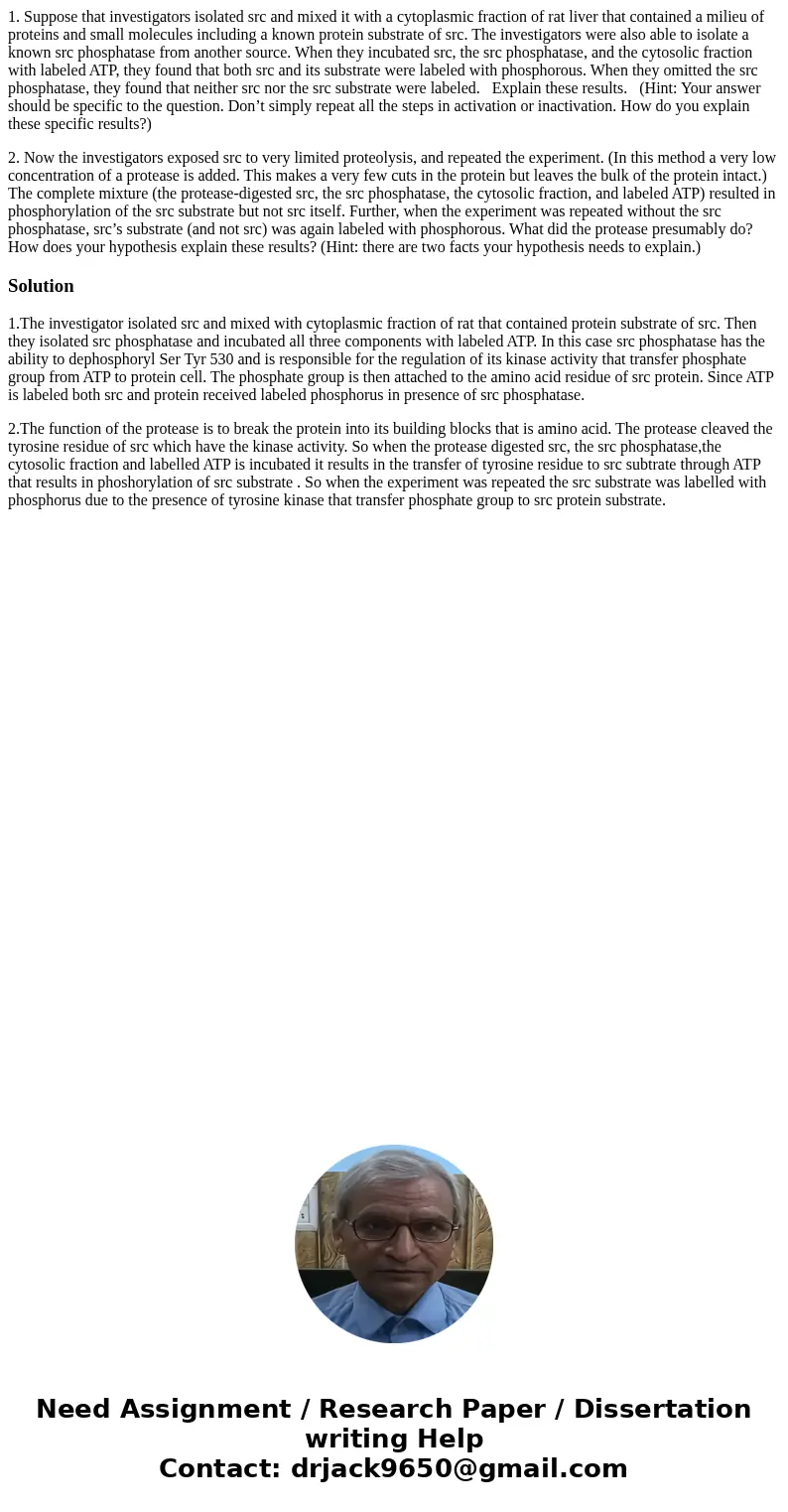1 Suppose that investigators isolated src and mixed it with
1. Suppose that investigators isolated src and mixed it with a cytoplasmic fraction of rat liver that contained a milieu of proteins and small molecules including a known protein substrate of src. The investigators were also able to isolate a known src phosphatase from another source. When they incubated src, the src phosphatase, and the cytosolic fraction with labeled ATP, they found that both src and its substrate were labeled with phosphorous. When they omitted the src phosphatase, they found that neither src nor the src substrate were labeled. Explain these results. (Hint: Your answer should be specific to the question. Don’t simply repeat all the steps in activation or inactivation. How do you explain these specific results?)
2. Now the investigators exposed src to very limited proteolysis, and repeated the experiment. (In this method a very low concentration of a protease is added. This makes a very few cuts in the protein but leaves the bulk of the protein intact.) The complete mixture (the protease-digested src, the src phosphatase, the cytosolic fraction, and labeled ATP) resulted in phosphorylation of the src substrate but not src itself. Further, when the experiment was repeated without the src phosphatase, src’s substrate (and not src) was again labeled with phosphorous. What did the protease presumably do? How does your hypothesis explain these results? (Hint: there are two facts your hypothesis needs to explain.)
Solution
1.The investigator isolated src and mixed with cytoplasmic fraction of rat that contained protein substrate of src. Then they isolated src phosphatase and incubated all three components with labeled ATP. In this case src phosphatase has the ability to dephosphoryl Ser Tyr 530 and is responsible for the regulation of its kinase activity that transfer phosphate group from ATP to protein cell. The phosphate group is then attached to the amino acid residue of src protein. Since ATP is labeled both src and protein received labeled phosphorus in presence of src phosphatase.
2.The function of the protease is to break the protein into its building blocks that is amino acid. The protease cleaved the tyrosine residue of src which have the kinase activity. So when the protease digested src, the src phosphatase,the cytosolic fraction and labelled ATP is incubated it results in the transfer of tyrosine residue to src subtrate through ATP that results in phoshorylation of src substrate . So when the experiment was repeated the src substrate was labelled with phosphorus due to the presence of tyrosine kinase that transfer phosphate group to src protein substrate.

 Homework Sourse
Homework Sourse